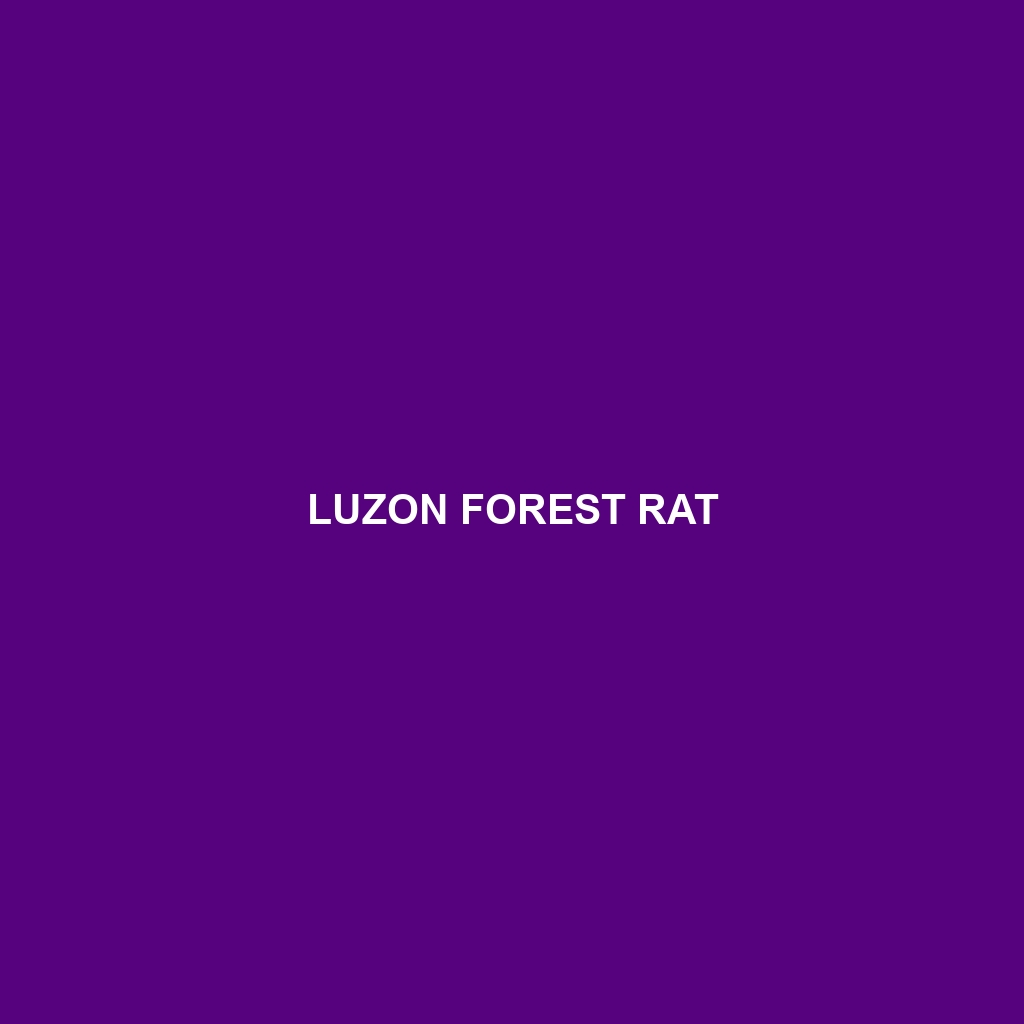Common Name: Luzon Forest Rat
Scientific Name: Rattus everetti
Habitat:
The Luzon Forest Rat, endemic to the Philippines, primarily inhabits the dense forests of Luzon Island. These rodents thrive in tropical and subtropical moist forests, often found at elevations ranging from 300 to 1,500 meters above sea level. They prefer habitats rich in underbrush, where they can easily conceal themselves from predators. Their range includes mountainous regions and areas with significant vegetation cover, crucial for their survival.
Physical Characteristics:
The Luzon Forest Rat exhibits a body length of approximately 18 to 30 cm, not including its long, scaly tail, which can extend an additional 10 to 15 cm. This species is characterized by its dense fur, which is typically brown to gray on top with a lighter, cream-colored underbelly. Its large, rounded ears and prominent eyes are distinctive features, allowing it to have excellent hearing and vision, essential for a nocturnal lifestyle.
Behavior:
Known for its arboreal tendencies, the Luzon Forest Rat is primarily nocturnal and spends a significant portion of its time foraging in trees and shrubs. These rats are adept climbers, using their strong hind legs and sharp claws to navigate their forested environment. They are social creatures, often found in small groups, and communicate through a series of vocalizations and scent markings to establish territory and attract mates.
Diet:
The diet of the Luzon Forest Rat consists mainly of fruits, seeds, and leaves, making them herbivorous foragers. They play a vital role in seed dispersal within their ecosystem, assisting in forest regeneration. Additionally, they may occasionally consume insects, providing a source of protein. Their feeding habits are influenced by seasonal availability, showcasing their adaptability to changing environments.
Reproduction:
The reproductive habits of the Luzon Forest Rat are marked by a breeding season that typically aligns with the rainy season, allowing for optimal food availability for raising young. After a gestation period of approximately 21 to 26 days, females give birth to a litter of 2 to 6 pups. Weaning occurs around three weeks, and the young are independent by about one month, establishing their territories soon after.
Conservation Status:
Currently, the Luzon Forest Rat is classified as Vulnerable on the IUCN Red List. Habitat destruction due to deforestation and agricultural expansion poses significant threats to their populations. Conservation efforts are essential to protect their natural habitats and ensure the survival of this unique species.
Interesting Facts:
The Luzon Forest Rat is not only important for ecological balance but also serves as a study model for scientists researching tropical biodiversity. Interestingly, they exhibit a unique behavior of building nests out of leaves high in trees, which can sometimes reach up to 3 meters from the ground.
Role in Ecosystem:
As a seed disperser, the Luzon Forest Rat plays a critical role in maintaining the health of forest ecosystems on Luzon Island. By foraging on a variety of fruits and nuts, they contribute to soil health and the proliferation of plant species, which in turn supports a range of other wildlife dependent on these trees for habitats and food sources.

